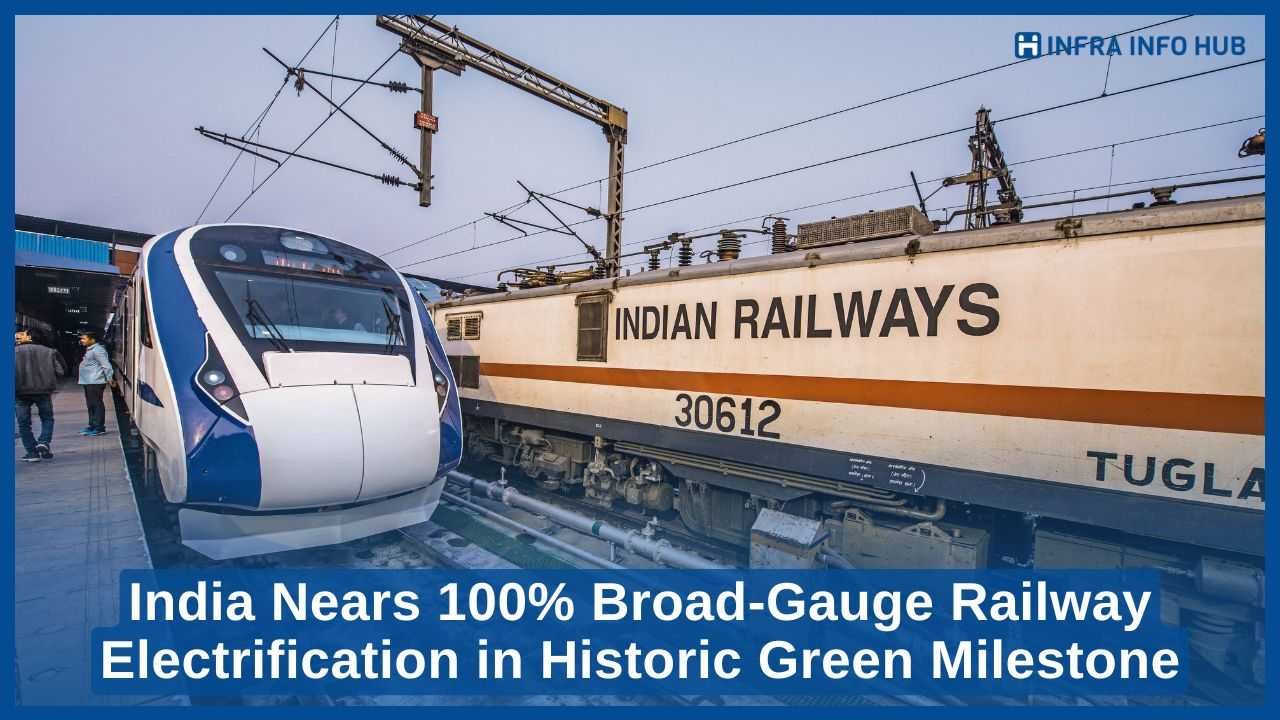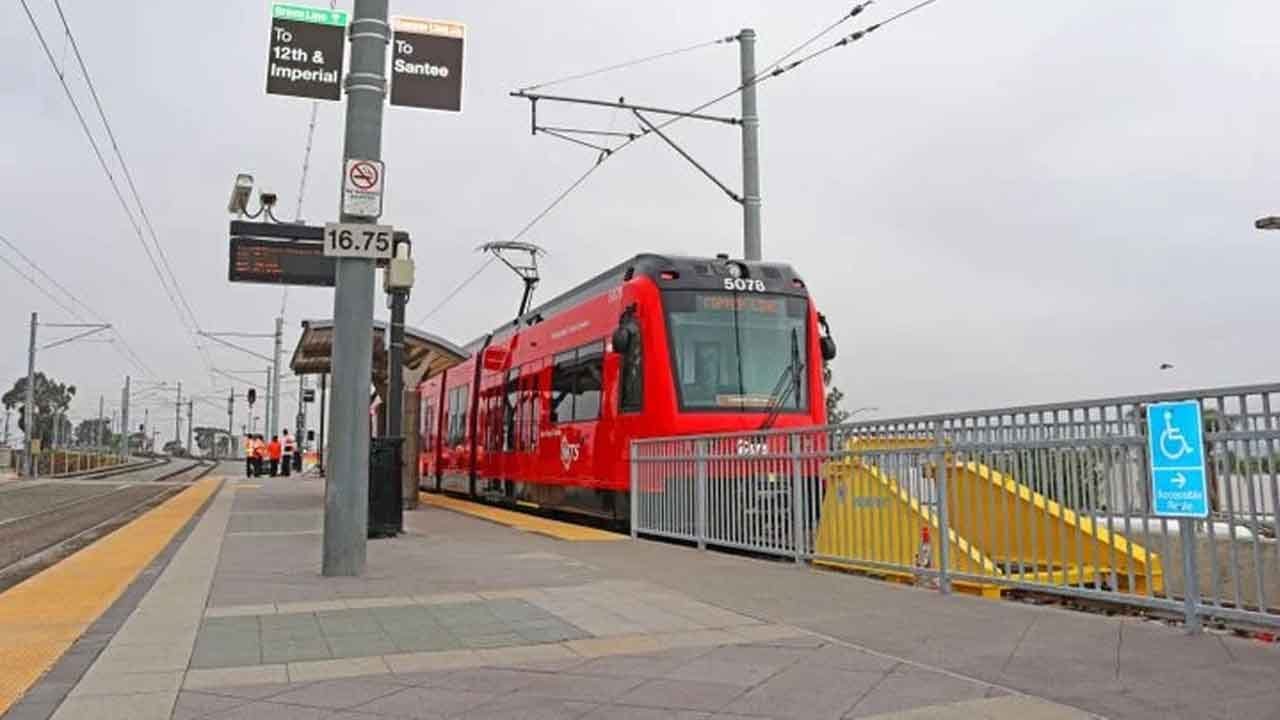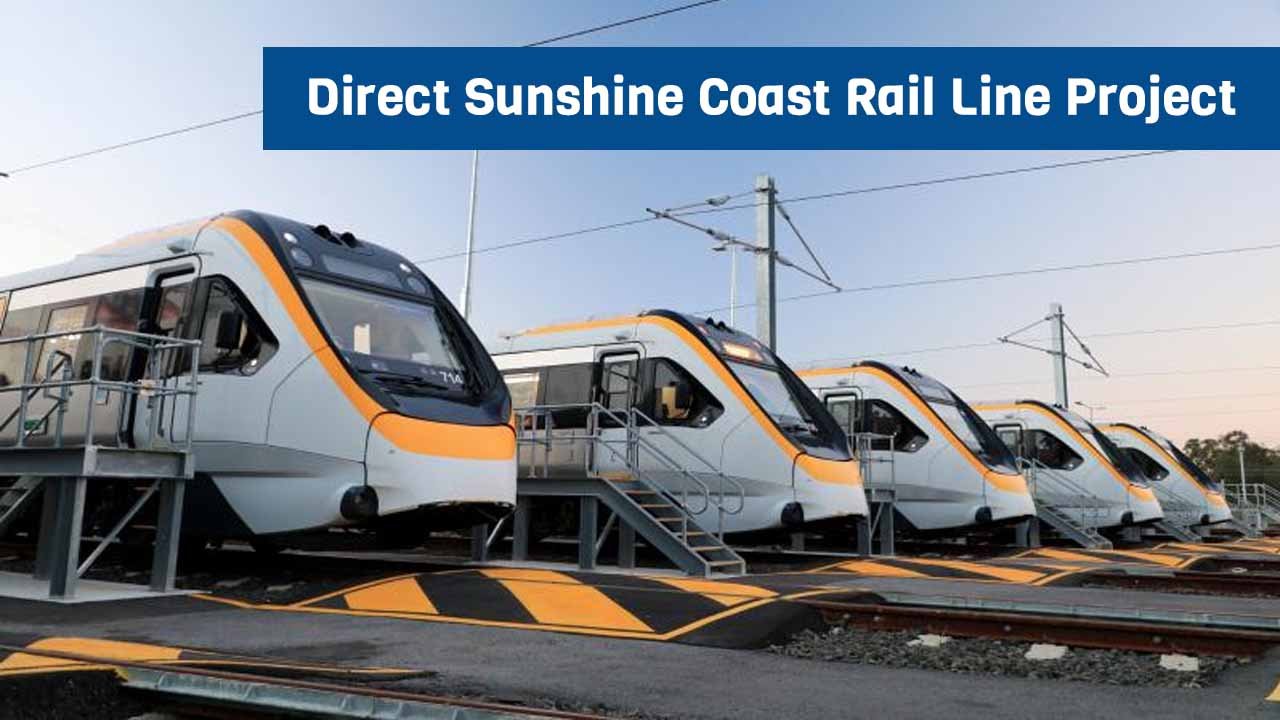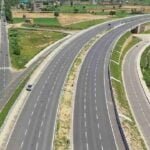India’s sprawling railway lattice — one of the largest on Earth — has reached a historic threshold: nearly 99% of its broad-gauge network now thrums with electric energy. This milestone, monumental in both scale and ambition, is not a mere infrastructural upgrade; it is a defining chapter in the nation’s pursuit of sustainable mobility.
Table of Contents
A National Mission in Full Throttle
This transformation is no accident of progress. It has been forged through a government-driven, mission-mode campaign to wean the Indian Railways off diesel and usher in an era of greener propulsion. The shift not only symbolises a technical triumph but also a strategic redirection of India’s transport philosophy.
In a formal statement to the Rajya Sabha, Railways Minister Ashwini Vaishnaw traced the contours of this change. Before 2014, the electrified length of India’s broad-gauge arteries stood at 21,801 kilometres. In the subsequent decade, the network expanded its electric reach by an astounding 46,900 kilometres — more than doubling the pre-2014 coverage. This sheer acceleration underscores the government’s determination to rewrite the nation’s transport blueprint.
Almost There — The Last Stretch
“Presently, about 99% of the Broad Gauge (BG) network is energised,” Vaishnaw declared. “The residual segments, scattered across challenging terrains and remote outposts, are already in the throes of active electrification.”
What remains is not a matter of hesitation but of logistics — the final pieces of a nearly complete puzzle. Once achieved, India will join an elite league of nations with a fully electrified broad-gauge system, enhancing both operational capacity and environmental stewardship.
Why Electrification Matters Beyond the Obvious
While the benefits of cleaner trains might seem self-evident, the true gains lie deeper. The replacement of diesel-powered locomotives drastically reduces carbon emissions, improves energy efficiency, and curtails dependence on imported fossil fuels — a matter of acute strategic relevance.
Electric trains also deliver greater hauling power and speed consistency, enabling faster passenger services and more reliable freight movement. This leap translates into economic uplift and environmental resilience for a nation where the railways form the arterial lifeline of commerce and commuting.
Moreover, electric traction’s lower operating costs will free financial resources that can be reinvested into modernisation and passenger services. The ripple effects — from cheaper logistics for industry to reduced travel times for ordinary citizens — are poised to be substantial.
Station Modernisation: The Other Half of the Revolution
Parallel to the electrification drive, Indian Railways is reimagining the very gateways through which passengers experience rail travel. Under the Amrit Bharat Station Scheme, a sweeping modernisation effort is underway to transform 1,337 stations into hubs of convenience, connectivity, and civic pride.
This is not merely a matter of repainting walls or adding a few amenities. The programme envisions:
-
Upgraded passenger facilities such as clean waiting lounges, advanced ticketing systems, and improved restrooms.
-
Accessibility enhancements for differently-abled travellers, ensuring inclusivity at every level.
-
Urban integration, with better linkages to bus terminals, metro stations, and airports.
-
Sustainable design practices include energy-efficient lighting, water recycling systems, and solar rooftops.
Minister Vaishnaw noted that Phase-I works for 105 stations have already reached completion, signalling that the transformation is not a distant promise but an ongoing reality.
The Economic and Social Undercurrents
The electrification and station rejuvenation efforts are not isolated projects; they form a cohesive national strategy. Together, they promise to:
-
Stimulate job creation in infrastructure, engineering, and allied industries.
-
Enhance tourism potential, as improved connectivity and station aesthetics attract travellers.
-
Strengthen regional economies, especially in areas previously underserved by modern infrastructure.
The cumulative effect is a more interconnected India, where travel is faster, cleaner, and more dignified.
The Road — or Rail — Ahead
Even as India approaches full electrification, the journey is far from over. The next frontier includes integrating smart technologies such as predictive maintenance, real-time passenger information systems, and AI-driven scheduling for maximum efficiency.
High-speed rail corridors, already in development, will benefit from the robust electrification backbone. Likewise, freight corridors dedicated to goods movement will leverage the electric network to boost efficiency and reduce transit times.
A Symbol of National Resolve
The near-completion of broad-gauge electrification stands as a symbol of execution capability in a country often criticised for bureaucratic delays. It demonstrates that with political will, technological focus, and sustained investment, even the largest infrastructural overhauls are possible within compressed timelines.
This transformation is more than steel tracks and overhead wires. It is the story of a nation in motion, aligning its infrastructural evolution with its environmental and economic aspirations. It is the hum of electric locomotives replacing the growl of diesel engines — a sound that whispers of a cleaner, faster, and more connected future.
As the last stretches of track come alive with electric current, India’s railways are poised not just to carry passengers and goods, but to carry forward the very momentum of the nation itself.










